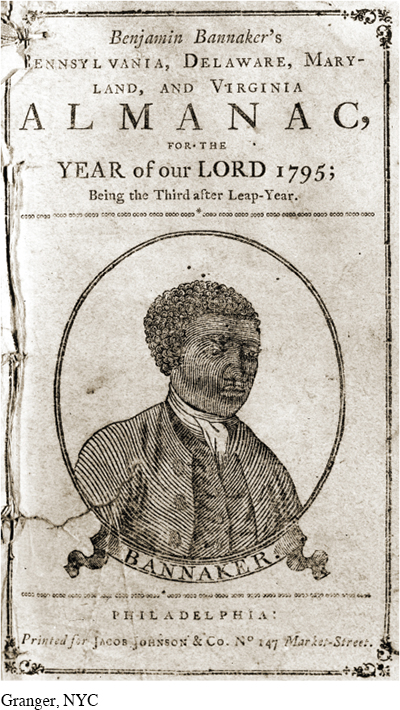The Racial Limits of an American Culture
American Indians received significant attention from writers and scientists. White Americans in the early republic often wielded native names and symbols as they sought to create a distinct national identity. Some Americans, including whiskey rebels, followed in the tradition of the Boston Tea Party, dressing as Indians to protest economic and political tyranny (see “The Whiskey Rebellion” in Chapter 7). But more affluent whites also embraced Indian names and symbols. Tammany societies, which promoted patriotism and republicanism in the late eighteenth century, were named after a mythical Delaware chief called Tammend. They attracted large numbers of lawyers, merchants, and skilled artisans.
Poets, too, focused on American Indians. In his 1787 poem “Indian Burying Ground,” Philip Freneau offered a sentimental portrait that highlighted the lost heritage of a nearly extinct native culture in New England. The theme of lost cultures and heroic (if still savage) Indians became even more pronounced in American poetry in the following decades. Such sentimental portraits of American Indians were less popular along the nation’s frontier, where Indians continued to fight for their lands and rights.
Sympathetic depictions of Africans and African Americans by white artists and authors appeared even less frequently. Most were produced in the North and were intended for the rare patrons who opposed slavery. Typical images of blacks and Indians were far more demeaning. When describing Indians in frontier regions, white Americans generally focused on their savagery and their duplicity. Most images of Africans and African Americans exaggerated their perceived physical and intellectual differences from whites, to imply an innate inferiority.
Whether their depictions were realistic, sentimental, or derogatory, Africans, African Americans, and American Indians were almost always presented to the American public through the eyes of whites. Educated blacks like the Reverend Richard Allen of Philadelphia or the Reverend Thomas Paul of Boston wrote mainly for black audiences or corresponded privately with sympathetic whites. Similarly, cultural leaders among American Indians worked mainly within their own nations either to maintain traditional languages and customs or to introduce their people to Anglo-American ideas and beliefs.
The improved educational opportunities available to white Americans generally excluded blacks and Indians. Most southern planters had little desire to teach their slaves to read and write. Even in the North, states did not generally incorporate black children into their plans for public education. African Americans in cities with large free black populations established the most long-lived schools for their race. The Reverend Allen opened a Sunday school for children in 1795 at his African Methodist Episcopal Church, and other free blacks formed literary and debating societies. Still, only a small percentage of African Americans received an education equivalent to that available to whites in the early republic.
U.S. political leaders were more interested in the education of American Indians, but government officials left their schooling to religious groups. Several denominations sent missionaries to the Seneca, Cherokee, and other tribes, and a few successful students were then sent to American colleges to be trained as ministers or teachers for their own people. This was important since few whites bothered to learn Indian languages.

The divergent approaches that whites took to Indian and African American education demonstrated broader assumptions about the two groups. Most white Americans believed that Indians were untamed and uncivilized, but not innately different from Europeans. Africans and African Americans, on the other hand, were assumed to be inferior, and most whites believed that no amount of education could change that. As U.S. frontiers expanded, white Americans considered ways to “civilize” Indians and incorporate them into the nation. But the requirements of slavery made it much more difficult for whites to imagine African Americans as anything more than lowly laborers, despite free blacks who clearly demonstrated otherwise.
Aware of the limited opportunities available in the United States, some African Americans considered the benefits of moving elsewhere. In the late 1780s, the Newport African Union Society in Rhode Island developed a plan to establish a community for American blacks in Africa. Many whites, too, viewed the settlement of blacks in Africa as the only way to solve the nation’s racial dilemma.
Over the next three decades, the idea of emigration (as blacks viewed it) or colonization (as whites saw it) received widespread attention. Those who opposed slavery hoped to persuade slave owners to free or sell their human property on the condition that they be shipped to Africa. Others assumed that free blacks could find opportunities in Africa that were not available to them in the United States. Still others simply wanted to rid the nation of its race problem by ridding it of blacks. In 1817 a group of southern slave owners and northern merchants formed the American Colonization Society (ACS) to establish colonies of freed slaves and free-born American blacks in Africa. Although some African Americans supported this scheme, northern free blacks generally opposed it, viewing colonization as an effort originating “more immediately from prejudice than philanthropy.” Ultimately the plans of the ACS proved impractical. Particularly as cotton production expanded from the 1790s on, few slave owners were willing to emancipate their workers.
Exploring American HistoriesPrinted Page 247
Exploring American Histories Value EditionPrinted Page 184
Chapter Timeline